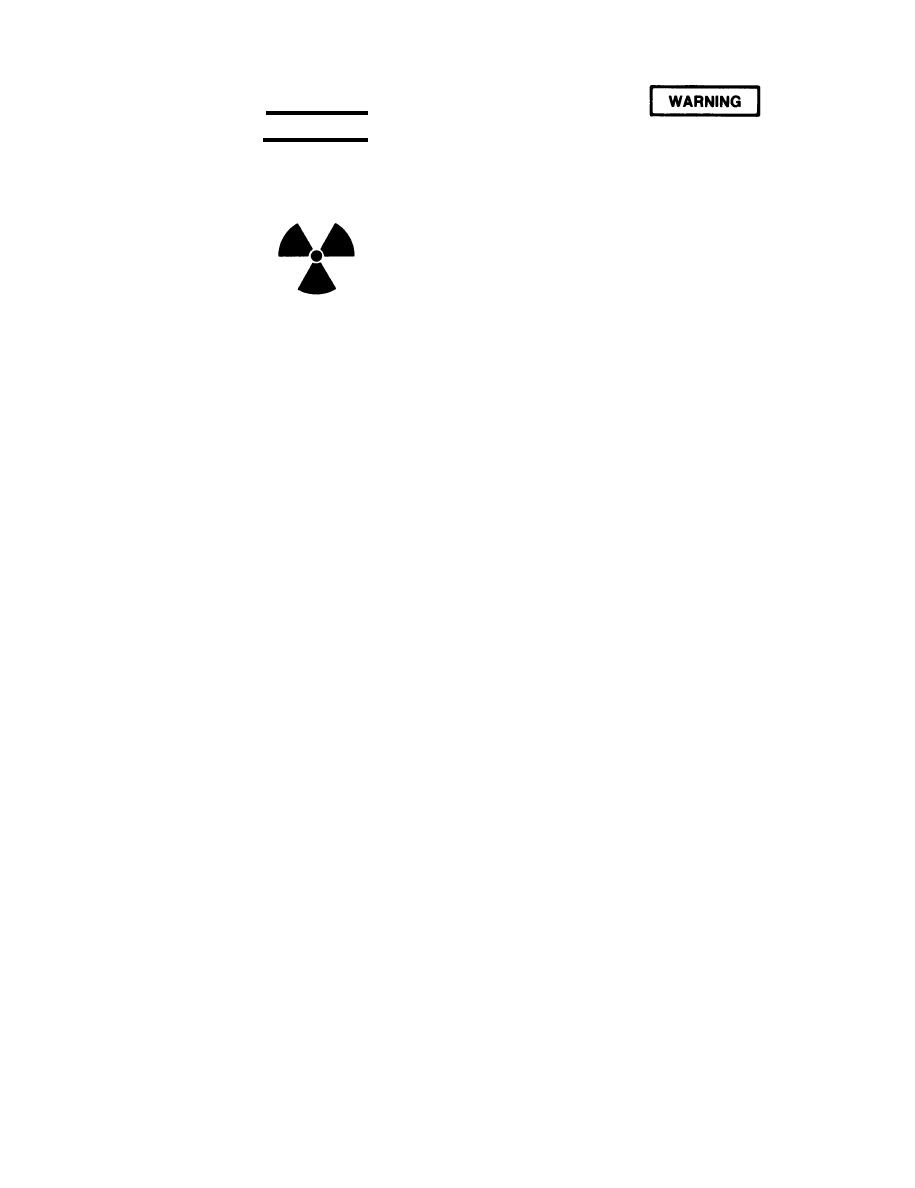 |
|||
|
|
|||
|
Page Title:
Section VI. DESTRUCTION BY IMPROPER OPERATION |
|
||
| ||||||||||
|
|
 TM 43-0002-31
2-17. Procedures for Using Gunfire.
Observe applicable surface danger zones
WARNING
specified in AR 385-63 for hazards from
incendiary grenades, flamethrowers,
DEATH or severe wounds or burns may
incendiary rockets, and demolitions or
result if personnel fail to observe safety
from ricochets from gunfire.
precautions.
a. Select ammunition and weapons that will obtain
best results when destroying equipment by gunfire.
b. Before firing weapons, clear all personnel from
the surface danger zone to prevent injury from
ricochets.
c. At ranges of 500 meters or less, fire artillery and
Radiation hazard. Do not use mechani-
launch rockets or grenades from cover.
cal means, demolition, fire, gunfire, or
d. Fire rounds in salvos or rapid and intense fire to
dumping in water to destroy radioactive
assure enough hits to completely destroy targeted
sources. Exposure to radiation from the
equipment.
source may cause casualties or deaths.
Section VI. DESTRUCTION BY IMPROPER OPERATION
2-18. Improper Operation.
are common tools, such as wrenches and screwdrivers,
and debris, such as sand and dirt.
a. Deliberate abusive, improper operation of cer-
tain equipment will damage vital parts such as motors
2-20. Procedures for Using Improper Operation.
and engines. If hasty destruction becomes necessary,
The procedures below are examples of improper opera-
improper operation can be used to damage equipment
tion and abuse that will damage or destroy engines or
left behind.
motors.
b. This method is not usually as effective or reliable
a. Drain coolants, lubricants, and oil.
as mechanical means, demolition, or fire.
b. Add debris (sand, dirt, etc) to moving parts that
c. Improper operation will often take too long to be a
have critical tolerances and close fittings.
main method of destruction.
c. Leave engines running at full throttle with no load
by removing or restraining governor.
2-19. Required Materials for Improper Operation.
d. Clear personnel from area to protect them from
Materials required for destruction by improper operation
possible flying fragments from engine blowup.
Section VII. USE OF NATURAL SURROUNDINGS
of equipment by using natural surroundings. If equip-
2-21.
Use of Natural Surroundings.
ment is to be scattered or hidden on land or dumped in
a. Use natural surroundings such as dense under-
water or swamps, the only materials required are those
brush, caves, holes in the ground, lakes, streams,
tools needed for disassembly. If equipment is to be
ponds, bogs, or swamps to-scatter, hide, bury, or sub-
buried, picks, shovels and similar equipment are re-
merge vital parts of equipment.
quired. If bulldozers are available, they can be used to
b. Using natural surroundings is limited in effec-
bury items.
tiveness if the enemy carefully searches the area later.
Take time to camouflage the burial or hiding places.
2-23. Procedures for Using Natural Surroundings.
Burying takes time, labor, and tools to dig holes and
a. Scattering.
cover the items, If water is shallow or clear or apt to dry
(1) Disassemble equipment.
up, equipment dumped into it maybe easily recovered.
(2) Scatter parts widely enough in underbrush
2-22. Required Materials for Using Natural Sur-
or deep weeds to prevent regathering.
roundings. Few materials are required for disposing
2-9
|
|
Privacy Statement - Press Release - Copyright Information. - Contact Us |